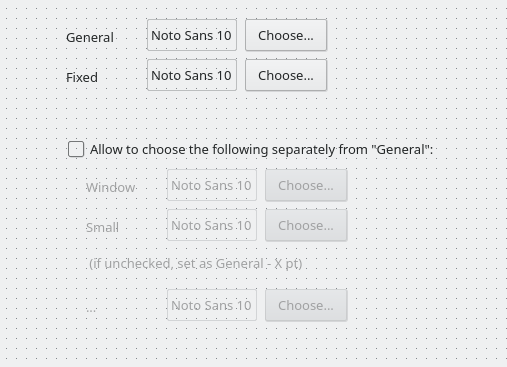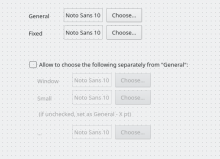Add easy mode for users not familiar with font rendering. Use current interface as “advanced mode”.
Based on the ideas of a tool used in Munich {M120} the easy mode has
- selection of a typeface
- applies to all but “Fixed width”
- selection of font size with predefined words
- preview of selected typeface and size with different rendering options
- anti-aliasing on/off
- subpixel-rendering on/off
- hinting full/medium/slight/off
- reset to defaults button (panic button)




